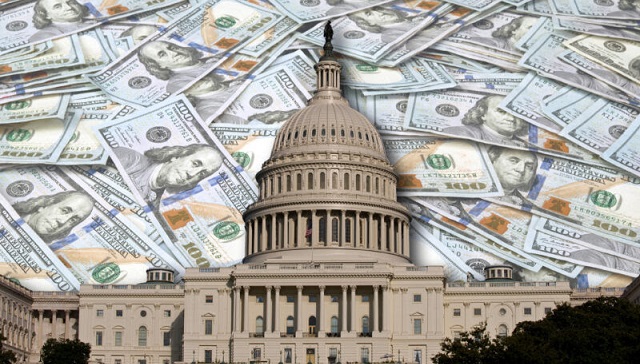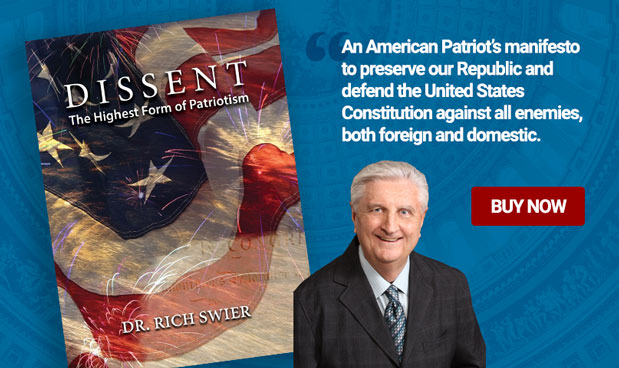Covid ‘Stimulus’ Screwed Americans While Boosting The Rich

“We may seriously begin to ask if leftwing America is a massive oligarchy cloaked in identity politics.’
The left hates you.
How Pandemic-Era ‘Stimulus’ Screwed Americans While Boosting The Rich
By: Joe Popularis, The Federalist, February 28, 2022:
US. inflation is nearing levels not seen since the 1970s and early 1980s, at 7.5 percent year-over-year as of January, the largest rise in four decades. The issue is a major concern for voters, and Democrats face historic midterm losses. Inflation has even killed the Biden agenda thus far—Sen. Joe Manchin’s primary reason for nixing “Build Back Better,” a mess of largely corporatist priorities from a disjointed Democratic base, was his fear that it would push up prices further.
The left, however, is making a ridiculous effort to say that inflation is not a problem or even good for working-class Americans. CNN has run articles to this effect. New York Times writer Sarah Jeong says inflation concerns are “driven by rich people … because their parasitic assets aren’t doing as well as they’d like and they’re scared” that government stimulus—supposedly directed at the bottom half of earners—is why.
The idea that somehow government spending benefits the poor or working-class more than the rich is ridiculous. Just look at the stimulus since 2020, and its effects.
Stimulus Directly Caused the Current Inflation
Inflation took off in the second quarter of 2021, after a new Democratic Congress poured a $2 trillion in federal overspending they called “stimulus” on an economy that had already received a combined $2.8 trillion in stimulus in 2020. Republicans can blame Democrats, with some justification, but the seeds of higher inflation were already sown.
History should judge the federal government’s pandemic response harshly. A several-week lockdown may have been acceptable without hindsight, given concerns about mass deaths and an overwhelmed medical system. But as soon as the virus was known to be much less deadly than feared, and that there was no great strain on the medical system, the federal government should have punished states needlessly maintaining activity restrictions.
The original stimulus bill, passed by congressional Republicans and signed by President Trump, was ill-conceived. The payroll protection program (PPP) ended up lining the pockets of business owners with taxpayer dollars far more than protecting payrolls. Large chunks of it were stolen by fraudsters, while many employers then had incentives to not seek or call for a return to normality.
Meanwhile, enhanced unemployment paid unemployed persons $600 extra per week, on top of regular unemployment. This means a job paying roughly less than $60,000 could not compete with the benefits. Even when these benefits were extended in early 2021 at a reduced amount—$300 extra per week—millions avoided the workforce.
Between PPP and extended unemployment, billions were stolen, some by criminal gangs and especially by foreigners. One group of experts alleges that up to half of all U.S. unemployment benefits, $400 billion, was stolen by mostly foreign criminals.
By mid-2021, a huge amount of money was chasing a fixed amount of goods and services—with the services shortage exacerbated by enhanced unemployment and school closures hampering the return to work, and the goods shortage caused by America’s overreliance on production overseas, especially China. Computer chip shortages are of particular concern, affecting everything from electronics to auto production. Here, note the criminality of U.S. policymakers allowing America’s chip supply to be produced in Taiwan.
Inflation Harms the Working Class Most
Because of high inflation, average Americans are seeing a decline in real wages—if your pay is up 4 percent from last year, but inflation is up 7 percent, you just got a 3 percent pay cut. Leftwing economists point out that the lowest earners aren’t experiencing negative real wages when discounting their pay increases by the CPI. There are two major problems with this analysis.
First, large gains for low-wage workers in many service industries makes sense given the labor shortage caused by the federal stimulus. But the effects of the government-caused labor shortage will only dissipate over time.
Next, pay on the bottom end is so low that small dollar increases make the percent increase look large. If hourly pay at McDonalds increases from $15 to $18 per hour, that’s a 20 percent increase and supposedly massively outpaces inflation. Jason Furman is impressed, but you shouldn’t be.
Yet the biggest reason the decline in real wages is also likely hitting low-income Americans is that low-income Americans don’t consume the CPI, an estimated basket of what the average American consumes. Low-income Americans, as a percent of expenditures, spend far more on essentials like energy, rent, and food.
Inflation in an equal weighted basket of these items—call it the working-class CPI—is far outpacing headline CPI, at 11.2 percent as of December versus 7.1 percent on headline CPI. This means the CPI is objectively undercounting shelter inflation. Home prices are up around 20 percent year over year. Private surveys of rent say rent is up by at least double digits, compared to the CPI that says rent is up only 4.2 percent.
It is beyond the scope of this article, but the actual rent inflation along with massive home price increases should feed into the CPI report over time, causing the shelter component of CPI to continue rising. High rent inflation is another reason the working class is being harmed relative to home-owners.
Either way, leftists discounting fast food wage increases by headline CPI to say, “Hey, inflation is actually good” should retire from economic commentary. Indeed, as consumer confidence has crashed to ten-year lows because of inflation, inflation fears increased most among low-income Americans and Americans living on fixed incomes.
The left makes these arguments to justify more stimulus—which happens to flow to the stock market—and easier policy from the Federal Reserve, which also happens to flow to the stock market. They are completely wrong and their policies objectively increase wealth inequality.
The Rich Got Richer
Even as inflation (the loss of your purchasing power) pushed higher, all the excess money flowed to major U.S. corporations and the stock market. On top of this, corporations received direct stimulus aid from the Federal Reserve and Congress, including when the Federal Reserve said it would purchase high-yield corporate debt, which is just one reason the left’s analysis—that inflation helps the poor and harms the rich—is completely wrong.
While the U.S. economy is only 3 percent larger since before lockdowns, stocks—measured by the S&P 500 Index of the 500 largest U.S. companies—are up over 40 percent including dividends since the end of 2019. And rich families don’t just have allocations to equities, they have commodities in their portfolio, which were up massively in 2021 (commodities, especially oil, largely drove the increase in CPI).
According to Niall Ferguson, “The wealthiest 10% of American households now own 89% of all U.S. stocks, according to the Federal Reserve. The top 1% gained more than $6.5 trillion during the pandemic, as the value of their corporate equities and mutual funds soared. Corporate profits are up 17% in the last two years.”
Eighteenth-century economist Richard Cantillon noted this phenomenon: when new money was printed, those closest to the king benefited, while those furthest from the king—the lower classes—felt only the inflation of their prices and the loss of their purchasing power. When government literally redistributes wealth away from the working and middle class to the oligarchy via the loss of purchasing power to those who get the money first, it is called “the Cantillon effect.”
Just think about the composition of the Democrats’ $2 trillion stimulus from early 2021. Three-fourths of the bill went to special interests, while less than one-fourth went to direct checks to Americans. Those direct checks were the least fraud-prone and most effective stimulus measure the federal government implemented between 2020 and 2021. Yet politicians uniformly despised them—many establishment Republicans were against them, while Democrats only saw direct stimulus payments as a way to grease the wheels for the three-fourths of their bill that was a handout to special interests.
The Fiscal Solution
EDITORS NOTE: This Geller Report column is republished with permission. ©All rights reserved.
Quick note: Tech giants are shutting us down. You know this. Twitter, LinkedIn, Google Adsense, Pinterest permanently banned us. Facebook, Google search et al have shadow-banned, suspended and deleted us from your news feeds. They are disappearing us. But we are here. We will not waver. We will not tire. We will not falter, and we will not fail. Freedom will prevail.
Subscribe to Geller Report newsletter here — it’s free and it’s critical NOW when informed decision making and opinion is essential to America’s survival. Share our posts on your social channels and with your email contacts. Fight the great fight.
Follow me on Gettr. I am there, click here. It’s open and free.
Remember, YOU make the work possible. If you can, please contribute to Geller Report.


Leave a Reply
Want to join the discussion?Feel free to contribute!